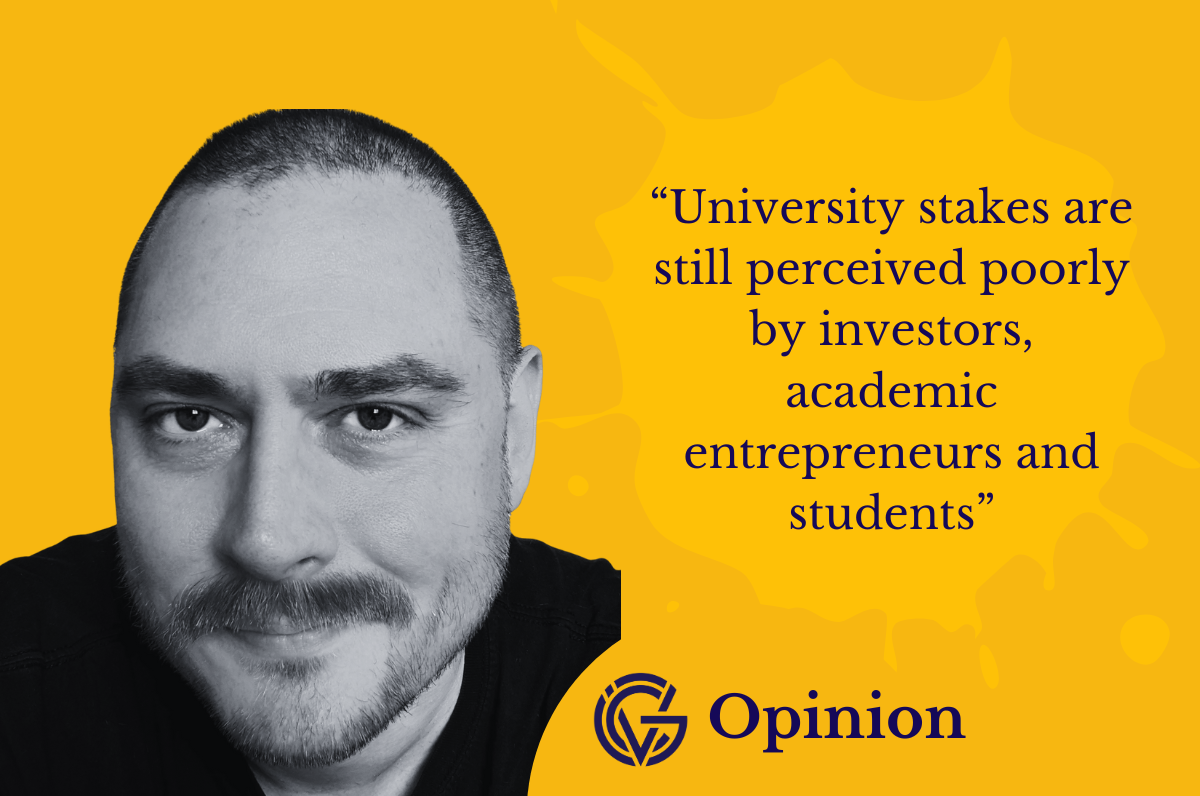University innovation needs a shot in the arm to truly have the impact it deserves. Abandoning equity stakes is the catalyst for spinning at speed.

Universities taking equity stakes in spinouts has long been a chief cause of boardroom brawls between factions in university innovation. A perennial spanner in the works, arguments over equity sully the relationship between founder parties, can grind progress on company creation to a halt, and traps potentially world-changing technology in the ether.
Even once a spinout has been formed, this initial process of the university taking a percentage of ownership in a spinout can set a university and its spinouts up for an acrimonious relationship that benefits neither. Worse, universities are often viewed dimly by founders and investors alike as a passive dead weight on a cap table. They are repeatedly held up as a blocker to investment and potential to scale, with stakeholders often complaining that university shares do little other than dilute returns for those doing the lion’s share of the work to grow a spinout, diminishing incentive. While this point of view could well fall into the subjective, what is certain is that university stakes remain a magnet for wide-reaching criticism and debate for comparatively little gain, hampering the growth and potential of the sector more widely.
All this begs the question: why bother? Given the myriad of complexities that already exist in tech transfer plus the increasing pressure on universities to spin at speed, would it not be easier for universities to simply cede their equity positions entirely?
“University stakes remain a magnet for wide-reaching criticism and debate for comparatively little gain”
From a university point of view, the answer is no. Universities will justly argue that this innovation is taxpayer-funded research, and the taxpayer should expect a return. Universities also point to their contributions through jobs to researchers, equipment and space, the credibility their brand lends to its researchers, and the cost of their university innovation arms. Yet it is that very same taxpayer that pays for those labs and salaries, and does so in return for technological advancements that benefit society at large. While a return to the university does help support this mission, it pales in comparison to the benefits the taxpayer would feel from a Google or an Arm emerging from a university.

In both cases, the arguments are a front for what this is really all about: politics. Academic entrepreneurs still have a day job while juggling the spinout creation process, and many will jump ship to the spinout entirely, never to return to academia. All of this presents a major headache for heads of department. In response, university leaders offer up equity returns to departments – filler for all the holes spinout creation leaves in a university.
Why, then, would universities adopt zero equity?
Indeed, research by Professor of Entrepreneurship and Innovation Thomas Hellman at Oxford’s Said Business School has demonstrated that – despite claims from investors to the contrary – university equity positions, be they low or high, are not a key indicator of future spinout success. In a study of into the ability of UK spinouts to attract venture funding, the size of a university shareholder was only found to negatively impact less scientifically-focused spinouts – the impact on most deep tech companies was negligible. Further, universities have already responded to criticism around equity with many leading institutions by dropping their percentages – enshrining in policy what was likely already working practice.
Despite this, the tsunami of spinouts prophesised by those demanding lower stakes has failed to materialise. Additionally, despite good-willed efforts, university stakes are still perceived poorly by investors, academic entrepreneurs and students while providing fuel to the fire for journalists and other commentators critical of the current system.
The problem here is narrative. Universities are not seen as a catalyst for innovation, but the antithesis of it – creating friction or inspiring sneakouts (spinouts that evade the university’s technology transfer office). Zero percent equity changes the paradigm. It turns the story of university hinderance into one of helping. It transforms the perception of the university from one of a two-bit landlord skimming off their tenants while doing nothing for it and places the focus back on the core university mission of disseminating knowledge to society.
Universities could still capitalise on their own contributions through licensing and royalties income, academic consultancy, providing essential services for new companies at subsidised rates, and university venture fund investment. University innovation arms could start at 0% equity and take percentages for increasing levels of support. Universities could also position abandoning equity to argue for an innovation premium for research funding or similar funding to pay for university innovation offices and the departmental strain. In return, universities stand to draw entrepreneurially minded students and academics, foster a successful ecosystem around an institution, and create harmonious and collaborative innovation communities.
Universities have shown time and time again the benefit their research can bring to society – the pandemic response alone demonstrated how crucial spinouts are to the world when university spinouts Moderna, BioNTech and Vaccitech delivered the vaccines necessary to end lockdown. We also exist at a time in which the wellbeing of future generations is entirely dependent on our ability to develop technological solutions to our grand challenges at pace and at scale – the success of which will live or die with the innovation happening right now in spinouts around the world. Universities can and should be central to achieving this mission, but only if they learn how to get out of their own way.
Gregg Bayes-Brown is a former editor of Global University Venturing and a university innovation communications veteran.









